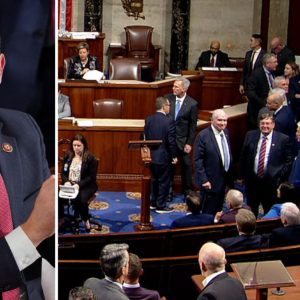Stephen Bryant, a 44-year-old man convicted in a case involving three deaths, became the third person in the United States this year to undergo a seldom-used execution procedure that South Carolina recently reinstated after nearly a decade and a half. Bryant had spent 21 years in custody and ultimately chose this method over other available options offered by the state. His conviction stemmed from a series of violent incidents in 2004, during which multiple individuals were killed and others were threatened or harmed. After lengthy legal proceedings, appeals, and the broader legal battles surrounding execution methods in South Carolina, the procedure was carried out on 14 November. Witness reports indicated that Bryant declined to issue a final statement, a decision that contrasted with the practice of many individuals in similar circumstances.
Media accounts, including those from The Independent, noted that Bryant received a final meal consisting of seafood stir fry and chocolate cake. This detail was highlighted in broader coverage of the execution, which retraced Bryant’s actions during the 2004 incidents. According to court records, he unlawfully entered one victim’s home and left behind a handwritten message, suggesting a disturbing emotional motive intertwined with his crimes. Additional legal filings recount the experience of another individual who survived an encounter with Bryant, further shaping the narrative of an escalating sequence of violent acts committed while he was on probation. The South Carolina Department of Corrections confirmed the official time of death as 6:05 p.m. local time, marking the conclusion of a case that had remained active in courts and public discussion for more than two decades.
Information shared by Bryant’s legal team attempted to place aspects of his life and actions in a broader context. His attorney, Bo King, described Bryant as a man shaped by significant hardship from birth onward, highlighting a genetic disorder and the consequences of long-term prenatal exposure to alcohol. According to King, Bryant suffered lasting developmental and emotional difficulties tied to his mother’s substance use, creating lifelong challenges in regulating emotions, forming relationships, and responding to stress. These factors were raised during various stages of his appeals as part of an effort to provide mitigating information about his psychological and developmental profile. Despite these arguments, courts ultimately upheld his sentence. This year’s execution followed the procedure’s reauthorization in South Carolina, which restored it after a long period during which legal and logistical obstacles prevented its use. Nationwide, the last time this method had been employed before 2025 was in 2010, illustrating how unusual its reappearance has been.
Bryant’s death marked the third time in 2025 that this specific method had been used in South Carolina, and by extension the entire country. Earlier in March, the state carried out the first such execution in 15 years when inmate Brad Sigmon opted for the same procedure instead of alternatives. Observers who witnessed that event described the process as notably faster and less visually prolonged compared with some other forms of execution historically used in the U.S., comments that generated both public interest and debate. The March execution was widely covered in national media because of the novelty of the method’s reinstatement and because South Carolina had not conducted an execution by any method since the early 2010s due to disputes over access to lethal injection drugs and legal questions surrounding other options.
One month later, the second such execution of the year involved inmate Mikal Mahdi. His case drew additional scrutiny because his attorneys raised concerns about the state’s medical documentation and procedural transparency. They questioned whether the Department of Corrections had adequately recorded certain physiological markers or followed medical protocols required to ensure the process was carried out as stated. These concerns revived longstanding debates over the role of medical oversight in executions and whether states provide enough documentation to demonstrate that the method meets legal standards of constitutionality. The Department of Corrections, however, strongly rejected any claims of improper procedure, insisting that all protocols were followed accurately and that external critiques were unfounded.
Against this backdrop, Bryant’s execution became part of a larger narrative about the changing landscape of capital punishment in the United States—one marked by legal challenges, supply shortages of lethal injection drugs, and renewed political efforts in some states to reclaim older or alternative methods. South Carolina’s recent history exemplifies these tensions: for years, legal battles over the availability of lethal injection compounds had halted executions entirely, prompting lawmakers to restore previously abandoned methods to ensure sentences could be carried out. The reinstatement of this rarely used procedure reflects broader national divisions over the death penalty. Whereas some states have moved toward abolition or moratoriums, others have taken steps toward expanding or reviving methods considered outdated or controversial. Bryant’s case, situated within this complex and evolving framework, underscores how individual stories—shaped by crime, mental health, legal appeals, and public policy—intersect with larger structural shifts in the administration of capital punishment in modern America.





